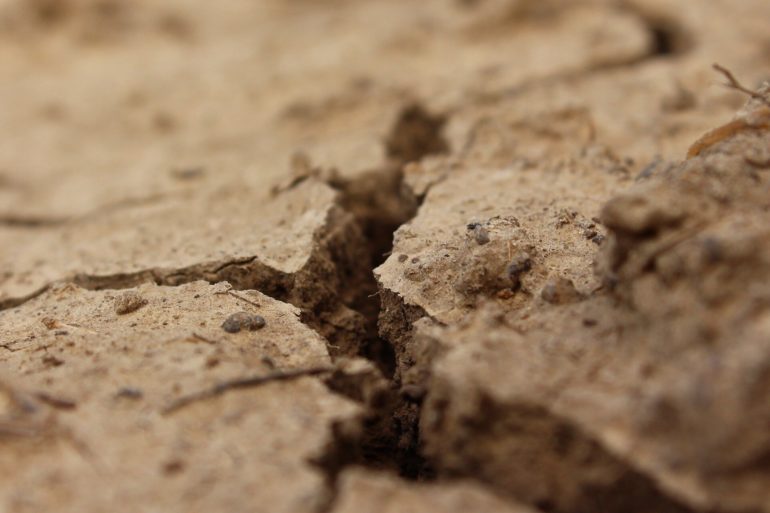Scientists at Duke University have developed a suite of four new tests that can be used to detect coal ash contamination in soil with unprecedented sensitivity.
The tests are specifically designed to analyze soil for the presence of fly ash particles so small other tests might miss them.
Fly ash is part of coal combustion residuals (CCRs) that are generated when a power plant burns pulverized coal. The tiny fly ash particles, which are often microscopic in size, contain high concentrations of arsenic, selenium and other toxic elements, many of which have been enriched through the combustion process.
While the majority of fly ash is captured by traps in the power plant and disposed to coal ash impoundments and landfills, some escapes and is emitted into the environment. Over time, these particles can accumulate in soil downwind from the plant, potentially posing risks to environment and human health.
“Because of the size of these particles, it’s been challenging to detect them and measure how much fly ash has accumulated,” said Avner Vengosh, Distinguished Professor of Environmental Quality at Duke’s Nicholas School of the Environment. “Our new methods give us the ability to do that—with high level of certainty.”
Coal combustion residuals are the largest industrial solid wastes produced in the United States. When soil contaminated with fly ash is disturbed or dug up, dust containing the ash can be transported through the air into nearby homes and other indoor environments. Inhaling dust that contains fly ash particles with high levels of toxic metals has been linked to lung and heart disease, cancer, nervous system disorders and other ill effects.
“Being able to trace the contamination back to its source location is essential for protecting public health and identifying where remediation efforts should be focused,” said Zhen Wang, a doctoral student in Vengosh’s lab at Duke, who led the study. “These new methods complement tests we’ve already developed for tracing coal ash in the environment and expand our range of investigation.”
The new tests are designed to be used together to provide independent corroborations of whether fly ash particles are present in a soil sample and if so, at what proportion to the total soil.
“First, we measure the abundance of certain metals, such as arsenic, selenium and antimony, that we know are more enriched in coal ash than in normal soil,” Wang said. “If these metals are present at higher-than-normal levels, we test the sample using two other geochemical indicators, radium nuclides and lead stable isotopes, which are more sensitive than trace metals and can be used to detect low occurrence of fly ash in soils. We also examine the soil under a microscope to test if we can physically identify fly ash particles and estimate what proportion of the soil they comprise.”
Each method has its own strengths and weaknesses, and if used solely could lead to overestimates or underestimates the occurrence of fly in soil, Vengosh said. “By using all four together, we are able to verify the forensic investigation of fly ash presence in soils.”
To assess the reliability of the new tests, the researchers analyzed surface soil from 21 sites downwind of the Tennessee Valley Authority’s Bull Run Fossil Plant in Claxton, Tenn., and 20 sites downwind of Duke Energy’s Marshall Steam Station on Lake Norman, N.C. The North Carolina samples came from Mooresville, a town located across the lake from the Marshall plant. Control samples were also collected at sites upwind of each plant.
The tests consistently showed that most of the samples collected downwind of both plants contained fly ash contamination, but because the proportion of the fly ash was low, the concentrations of toxic elements did not exceed human health guidelines for metals occurrence in soil.
The tests also showed that soil samples near Bull Run Fossil Plant in Tennessee generally contained significantly higher levels of fly ash than those from North Carolina, and that the highest concentration was in soil from the Claxton Community Park, a playground and recreational site located outside the Bull Run plant.
What does this all tell us?
“First, it confirms that our new tools perform consistently and, when used together, provide a reliable method for detecting contamination that other tests might miss,” Vengosh said.
“Second, it underscores the need to regularly monitor sites in close downwind proximity to a coal-fired power plant, even if levels of contamination are below current safety thresholds. Fly ash accumulates over time, and risks can grow with repeat exposures to playground dust or home dust,” Vengosh said.
“Low concentrations of toxic metals in soil does not equal to no risk,” Vengosh said. “We need to understand how the presence of fly ash in soils near coal plants could affect the health of people who live there. Even if coal plants in the United States are shutting down or replaced by natural gas, the environmental legacy of coal ash in these areas will remain for decades to come.”
The peer-reviewed study was published in July 20 in Environmental Science & Technology.
Lead isotopes a new tool for tracking coal ash
More information:
Zhen Wang et al, Evaluation and Integration of Geochemical Indicators for Detecting Trace Levels of Coal Fly Ash in Soils, Environmental Science & Technology (2021). DOI: 10.1021/acs.est.1c01215
Provided by
Duke University School of Nursing
Citation:
New tests can detect tiny but toxic particles of coal ash in soil (2021, July 22)
retrieved 23 July 2021
from https://phys.org/news/2021-07-tiny-toxic-particles-coal-ash.html
This document is subject to copyright. Apart from any fair dealing for the purpose of private study or research, no
part may be reproduced without the written permission. The content is provided for information purposes only.



